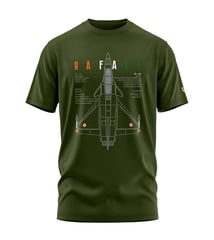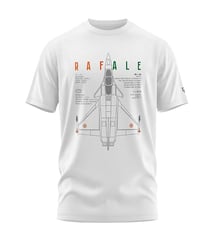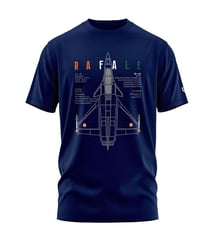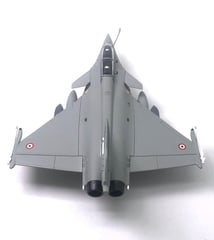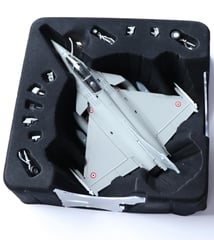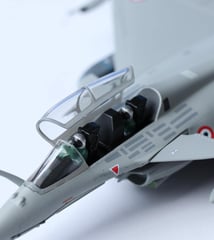In modern aerial warfare, air superiority is the linchpin for military dominance. For India, a nation surrounded by two hostile nuclear-armed neighbors—Pakistan and China—the pursuit of a potent, technologically superior air combat force is not merely a strategic choice but a security imperative. In this context, the induction of the Dassault Rafale multirole fighter jet into the Indian Air Force (IAF) marks a generational leap in air power capabilities. This article examines the Rafale's transformative impact, contrasts it with Pakistan’s frontline fighter aircraft, and evaluates how the synergistic deployment of Rafales, Su-30MKI, and S-400 air defence systems position India for dominance in any aerial conflict scenario.
The Rafale: A 4.5+ Generation Multirole Marvel
Developed by France's Dassault Aviation, the Rafale is a twin-engine, canard delta wing, omnirole fighter aircraft capable of performing air supremacy, interdiction, aerial reconnaissance, ground support, in-depth strike, anti-ship strike, and nuclear deterrence missions. India signed a €7.87 billion intergovernmental agreement in 2016 for 36 Rafales, all of which were delivered by 2022.
Key Features:
Engines: Two Snecma M88-2 turbofans (each producing 75 kN with afterburner)
Top Speed: Mach 1.8 (~2,222 km/h)
Combat Radius: Over 1,850 km with external fuel tanks
Service Ceiling: 50,000+ feet
Fly-by-wire flight control system
Radar: Thales RBE2-AA AESA radar (Active Electronically Scanned Array)
SPECTRA Electronic Warfare Suite – unmatched jamming and threat detection
Weapons: MICA (WVR and BVR), SCALP (long-range cruise missile), Meteor (beyond-visual-range air-to-air missile), Hammer (precision-guided air-to-ground munition), Exocet (anti-ship missile)
Edge Over Pakistan Air Force (PAF): A Comparative Analysis
Pakistan’s fighter fleet comprises a mix of American, Chinese, and co-produced aircraft. The principal frontline assets include:
1. F-16 Fighting Falcon (Block 52+)
Origin: USA
Radar: AN/APG-68(V)9 (mechanically scanned)
Missiles: AIM-120C-5 AMRAAM (~105 km range), AIM-9M Sidewinder
Limitations: Although combat-proven, the F-16's Block 52 variant lacks the stealth features, electronic warfare capabilities, and sensor fusion of the Rafale.
2. JF-17 Thunder (Blocks I-III)
Origin: China-Pakistan co-development
Radar: KLJ-7A AESA (only on Block III; earlier variants use older radars)
Missiles: PL-5 (WVR), PL-15 (BVR on Block III), but integration is nascent
Limitations: JF-17 Block I & II are inferior to 4.5 gen fighters. Block III is still in early production and unproven in real combat. Engine reliability remains a challenge.
3. Mirage III and Mirage V
Obsolete but occasionally upgraded with Chinese avionics and weaponry.
Comparison with Rafale:
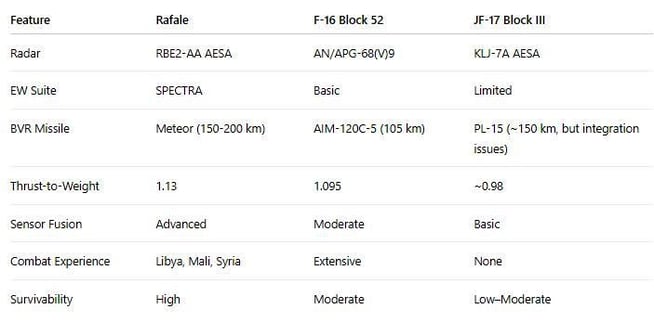

Verdict: The Rafale’s superior radar, electronic warfare capabilities, unmatched BVR missile (Meteor), and survivability make it a technological generation ahead of any fighter in the Pakistan Air Force. Even the F-16 Block 52, PAF’s most potent asset, is decisively outclassed by Rafale’s avionics, range, and weapons loadout.
Meteor Missile: The Kingmaker
One of the defining advantages of Rafale is the Meteor beyond-visual-range (BVR) air-to-air missile. With a range exceeding 150–200 km, and powered by a ramjet propulsion system, Meteor maintains high speeds throughout its flight path. This gives it a massive 'no-escape zone' (NEZ), estimated to be 3x larger than AMRAAM and PL-15.
Why Meteor is Superior:
Continuous thrust via ramjet → higher endgame maneuverability
Active radar seeker → autonomous targeting
Networked data link → real-time target updates
When paired with Rafale's AESA radar and SPECTRA EW suite, the Meteor makes any Pakistani aerial intrusion a dangerous proposition.
Rafale and Su-30MKI: Complementary Force Multipliers
The Su-30MKI, designed by Russia's Sukhoi and extensively customized by India’s HAL, is the IAF's heavy air dominance fighter. With over 270 Su-30MKIs in service, it is the backbone of the Indian Air Force.
Complementarity:
Rafale: High-end multirole aircraft with advanced avionics, radar stealth, and deep strike capability
Su-30MKI: Long endurance, super-maneuverability, heavy weapons load, and strategic range
Together, these jets enable:
Penetration-strike missions deep into enemy territory
Electronic jamming and SEAD (Suppression of Enemy Air Defences)
Combined strike packages that fuse Rafale’s precision and stealth with Su-30MKI’s range and firepower
India has already integrated BrahMos-A on Su-30MKIs and exploring future integration with Hypersonic BrahMos-II, enabling long-range, supersonic stand-off strikes.
Rafale and S-400: The Airspace Denial Triad
India began receiving S-400 Triumf air defence systems from Russia in late 2021. These long-range SAMs can intercept enemy aircraft, drones, and missiles at ranges up to 400 km, with layered defense tiers (9M96, 48N6, 40N6 missiles).
Use with Rafale:
Rafales conduct deep strike or air superiority missions under the S-400’s protective umbrella.
S-400 provides air denial against retaliatory Pakistani or Chinese counterattacks.
Enemy air forces would need to first suppress or evade S-400 batteries—a difficult task—before confronting Rafales and Su-30MKIs in contested airspace.
This combination forms a triad of offensive and defensive synergy:
Rafale: First-day-of-war striker and air dominance
Su-30MKI: Hammer for saturation strikes and control of battlespace
S-400: Shield that neutralizes enemy intrusion and missile threats
Strategic Implications for Two-Front War
With China reinforcing its Western Theatre Command and Pakistan deepening defence ties with Beijing, India’s need for rapid, high-tech, multi-role aircraft is undeniable. The Rafale fleet—stationed at Ambala (north) and Hasimara (east)—is geographically optimized for both fronts.
In the Western Sector (Pakistan):
Air dominance in initial hours of conflict
Neutralization of high-value PAF assets and airbases
Deep penetration using SCALP and Meteor
In the Eastern Sector (China):
Mountain warfare requires high thrust-to-weight and multirole capability—Rafale excels here
AESA radar helps detect stealthy Chinese aircraft like J-20
Better suited than older aircraft for Tibet high-altitude operations
Conclusion: A Strategic Deterrent in Peace, A Force Multiplier in War
The Rafale is more than just a fighter jet—it is a technological deterrent, a geopolitical signal, and a tactical game-changer. Its arrival has altered South Asia's aerial power balance, forcing adversaries to reconsider their doctrines and capabilities.
Backed by the firepower of Su-30MKIs and protected by the S-400 missile shield, India now boasts one of the most sophisticated and layered air defence-offence architectures in the Indo-Pacific region.
In an age where future wars will be won or lost in the skies within hours, the Rafale ensures that India won’t just fight—but dominate.



